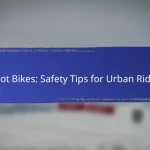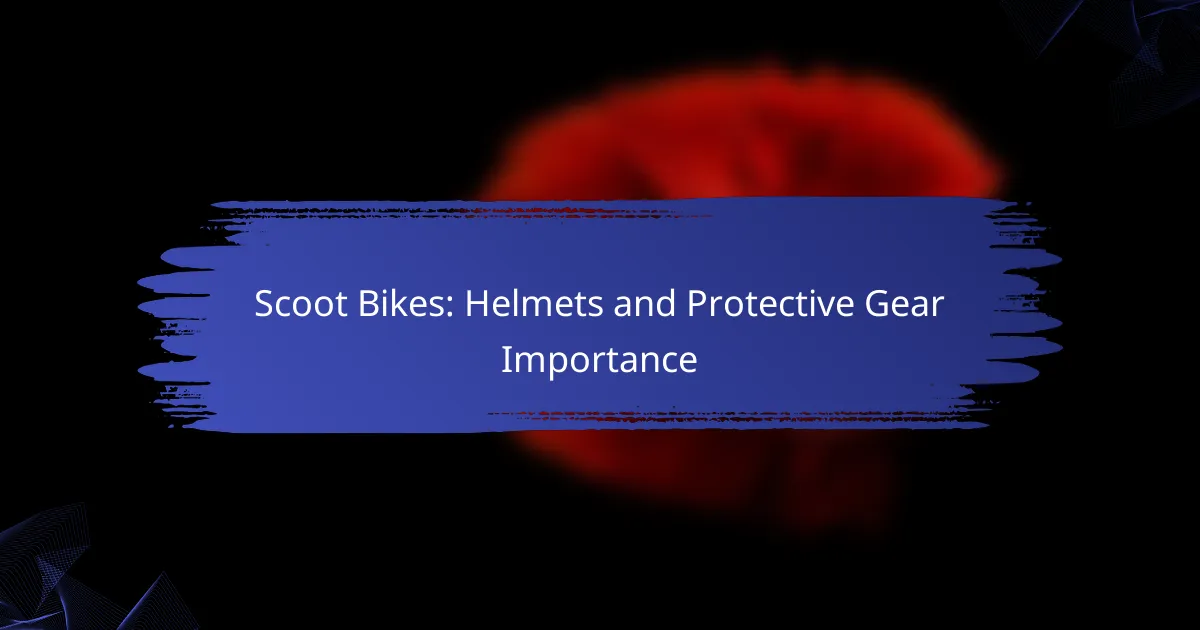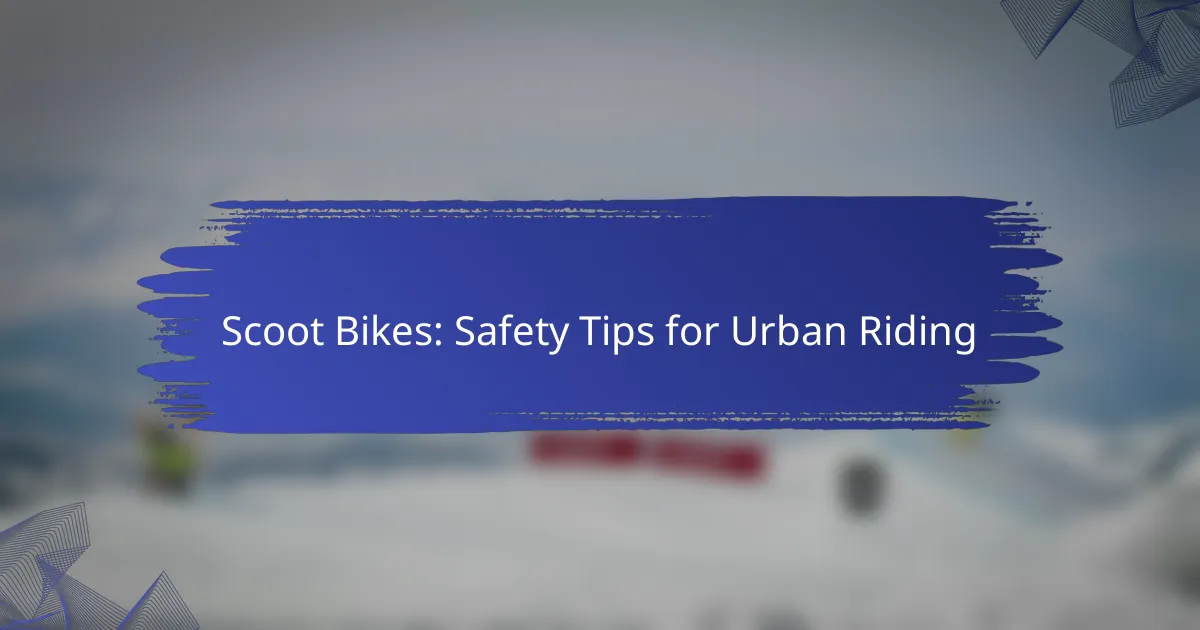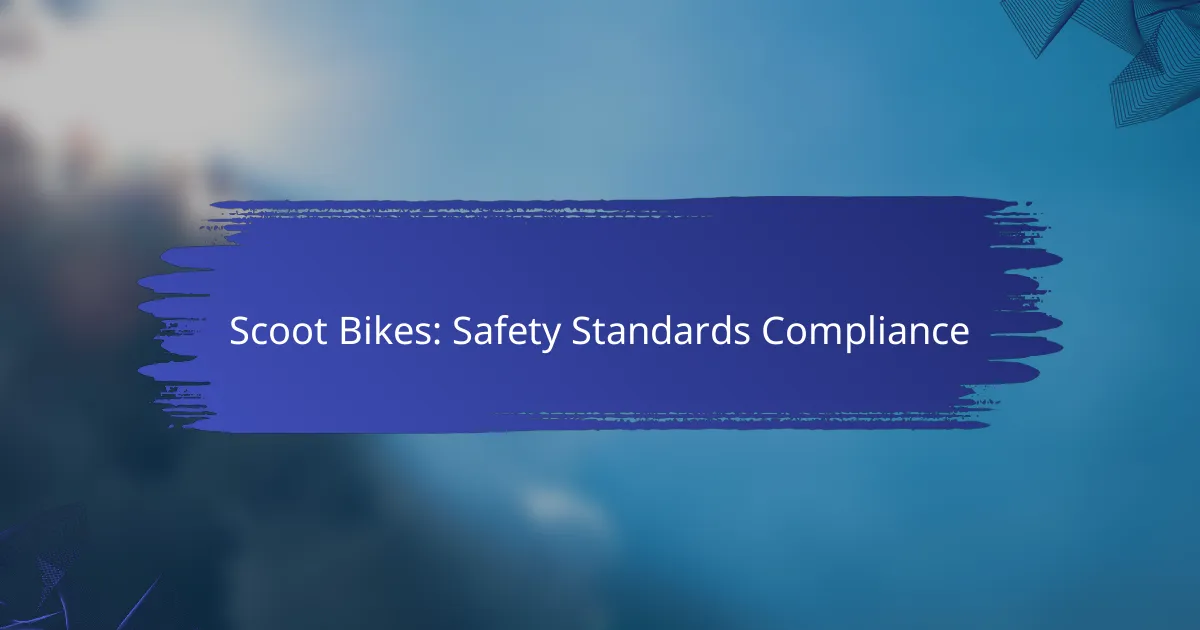When riding scoot bikes, wearing a helmet is essential as it significantly reduces the risk of head injuries in the event of an accident. In addition to helmets, protective gear such as knee pads, elbow pads, and wrist guards is crucial for safeguarding against injuries, ensuring a safer and more enjoyable riding experience.

Why are helmets essential for scoot bike riders?
Helmets are crucial for scoot bike riders as they significantly reduce the risk of head injuries during accidents. Wearing a helmet can absorb impact forces, protecting the brain and skull from serious harm.
Impact protection
Helmets provide vital impact protection by using materials designed to absorb shock. The outer shell disperses the force of an impact, while the inner foam layer cushions the head. This combination can lower the severity of injuries in falls or collisions.
When selecting a helmet, look for one that meets safety standards, such as those set by the American National Standards Institute (ANSI) or the European Committee for Standardization (CEN). A well-fitted helmet is essential for maximum protection, ensuring it stays securely in place during rides.
Legal requirements in the UK
In the UK, wearing a helmet while riding a scoot bike is not legally mandatory, but it is strongly recommended for safety. Local councils may have specific regulations regarding helmet use, especially in designated cycling areas.
While not required by law, many insurance providers may consider helmet use when assessing claims related to accidents. Thus, wearing a helmet can also be a wise choice for financial protection.
Injury statistics
Statistics indicate that a significant percentage of serious injuries among scoot bike riders involve head trauma. Studies show that wearing a helmet can reduce the risk of head injuries by up to 70%, highlighting its importance for safety.
Injuries can range from minor concussions to severe brain damage, making protective gear essential. Riders should be aware that even low-speed accidents can result in serious consequences, reinforcing the need for helmets and other protective gear.
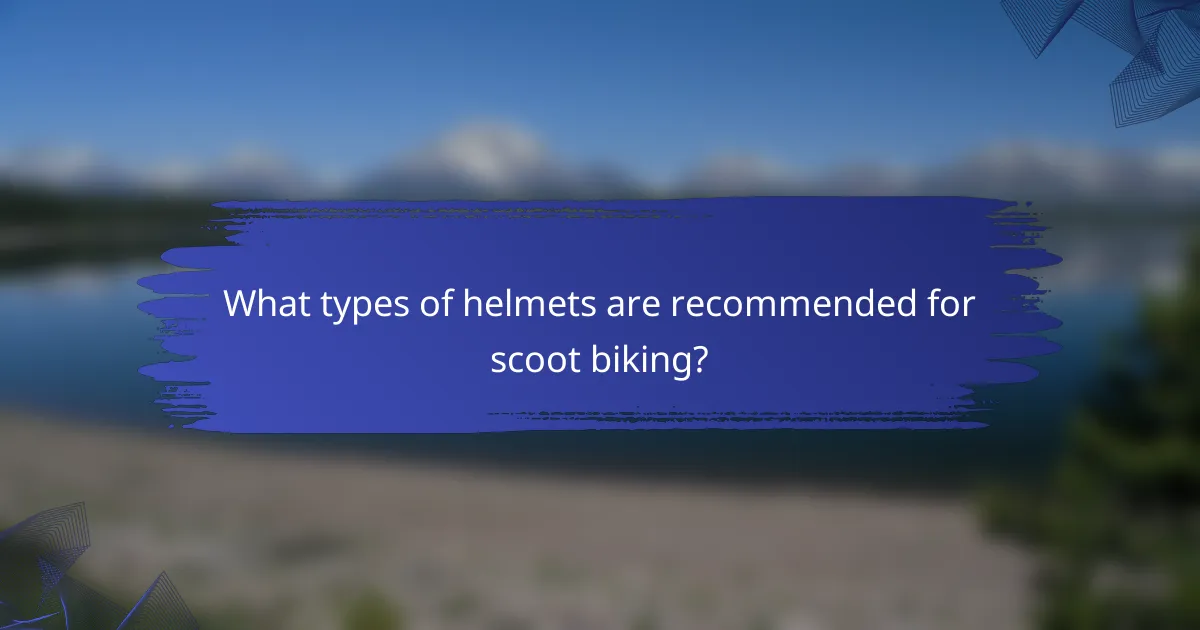
What types of helmets are recommended for scoot biking?
For scoot biking, it is crucial to choose helmets that provide adequate protection while ensuring comfort and fit. Recommended types include full-face helmets, half-shell helmets, and multi-sport helmets, each offering different levels of coverage and safety features.
Full-face helmets
Full-face helmets offer the highest level of protection by covering the entire head, including the chin and face. They are particularly beneficial for riders who engage in high-speed scoot biking or off-road riding, as they shield against impacts and debris.
When selecting a full-face helmet, ensure it meets safety standards such as DOT or ECE. Look for features like ventilation systems and removable liners for comfort during longer rides.
Half-shell helmets
Half-shell helmets provide coverage for the top and sides of the head while leaving the face exposed. They are lighter and often more comfortable for casual scoot biking, making them a popular choice among urban riders.
While they offer less protection than full-face helmets, half-shell helmets can still be effective for lower-speed riding. Ensure a snug fit and consider options with additional padding for enhanced comfort.
Multi-sport helmets
Multi-sport helmets are designed for various activities, including scoot biking, skateboarding, and cycling. They typically feature a lightweight design and adequate ventilation, making them versatile for different sports.
When using a multi-sport helmet for scoot biking, check that it meets relevant safety standards. These helmets may not provide the same level of protection as full-face options, so consider your riding style and environment when choosing this type.
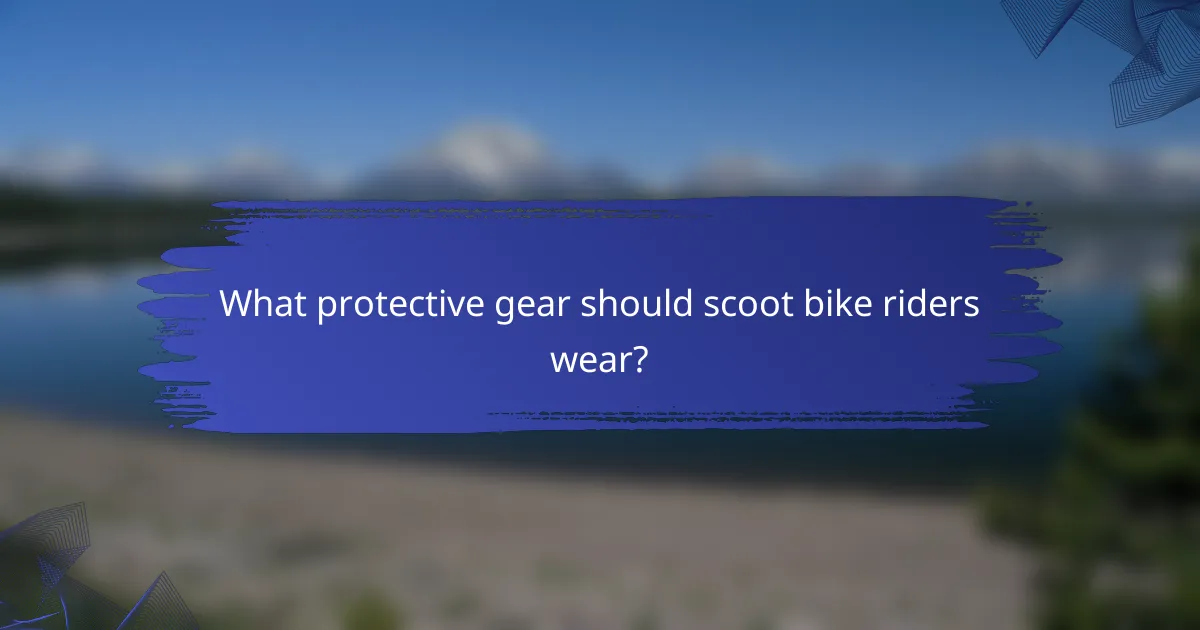
What protective gear should scoot bike riders wear?
Scoot bike riders should wear essential protective gear to minimize the risk of injury during rides. This includes knee pads, elbow pads, and wrist guards, each designed to protect specific areas of the body during falls or collisions.
Knee pads
Knee pads are crucial for protecting the knees from impact and abrasion. They are typically made from durable materials with cushioning to absorb shock. When selecting knee pads, look for a snug fit that allows for movement without slipping off.
Consider knee pads that meet safety standards for scoot biking, as these will provide better protection. A good pair should cover the knee joint fully and extend slightly above and below it for comprehensive coverage.
Elbow pads
When choosing elbow pads, opt for those that are lightweight yet sturdy. Look for adjustable straps to ensure a comfortable fit, which is essential for maintaining mobility while riding.
Wrist guards
Wrist guards are essential for preventing wrist injuries, which are common in falls. They typically feature a rigid splint that stabilizes the wrist and prevents hyperextension. A well-fitted wrist guard should allow for some wrist movement while providing adequate support.
When selecting wrist guards, consider models that offer ventilation for comfort during longer rides. Ensure they are easy to put on and take off, as this will encourage consistent use while scoot biking.
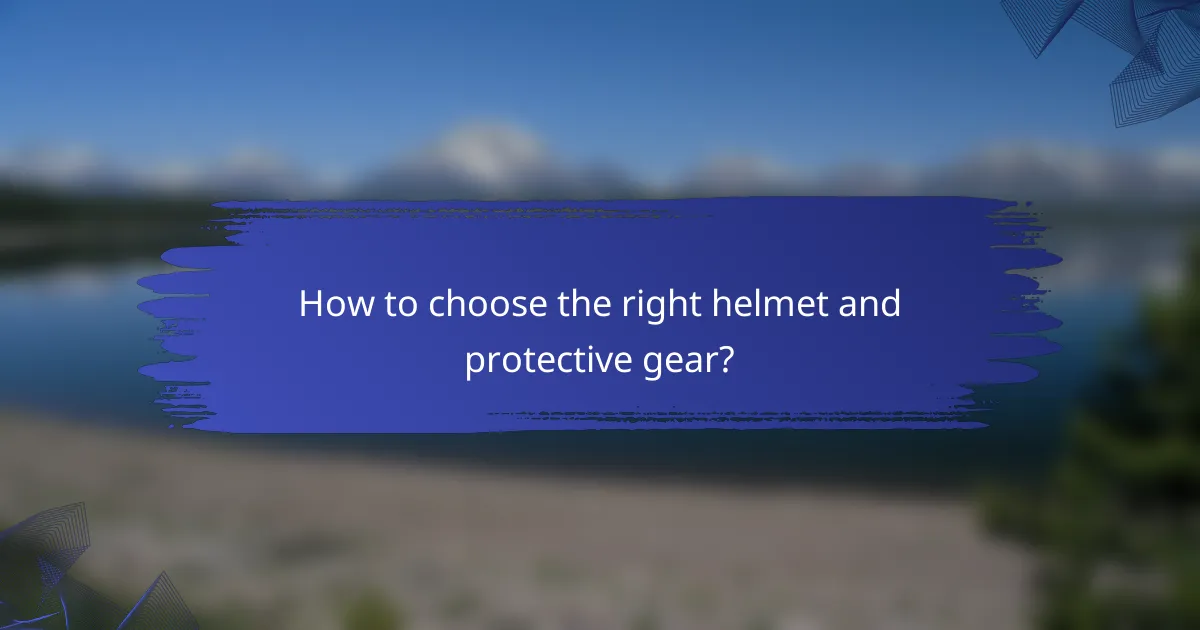
How to choose the right helmet and protective gear?
Selecting the right helmet and protective gear is crucial for safety while riding scoot bikes. Focus on fit, safety certifications, and material durability to ensure effective protection and comfort during use.
Fit and comfort
The fit of a helmet is essential for effective protection. A properly fitting helmet should sit snugly on your head without being uncomfortable, and it should not move when you shake your head. Look for adjustable straps and padding to enhance comfort.
To check the fit, wear the helmet and ensure it covers your forehead without obstructing your vision. If you can fit more than two fingers between the chin strap and your chin, the helmet may be too loose.
Safety certifications
Safety certifications indicate that a helmet meets specific safety standards. In the U.S., look for certifications from the Consumer Product Safety Commission (CPSC) or the Snell Memorial Foundation. In Europe, check for the EN 1078 standard.
Choosing a helmet with recognized safety certifications ensures that it has undergone rigorous testing for impact resistance and other safety features. Always verify the certification label before purchasing.
Material durability
The materials used in helmets and protective gear significantly affect their durability and effectiveness. Common materials include polycarbonate and fiberglass for helmets, which provide a good balance of weight and strength.
For protective gear like knee and elbow pads, look for high-density foam and reinforced outer shells. These materials can absorb impacts and resist wear over time, ensuring long-lasting protection.

What are the benefits of wearing protective gear while scoot biking?
Wearing protective gear while scoot biking significantly reduces the risk of injury and enhances the overall riding experience. Helmets, knee pads, and elbow pads provide essential protection, allowing riders to focus on enjoyment and skill development.
Injury prevention
Protective gear is crucial for injury prevention when scoot biking. Helmets can reduce the risk of head injuries by absorbing impact during falls, while knee and elbow pads protect against scrapes and fractures. Studies suggest that wearing a helmet can lower the likelihood of serious head injuries by a substantial margin.
When choosing protective gear, ensure it meets safety standards such as those set by the Consumer Product Safety Commission (CPSC) for helmets. Regularly inspect your gear for wear and tear, replacing any damaged items promptly to maintain safety.
Increased confidence
Wearing protective gear boosts a rider’s confidence, allowing them to take on new challenges and improve their skills. Knowing that you are protected against potential injuries encourages experimentation with tricks and maneuvers. This increased confidence can lead to a more enjoyable scoot biking experience.
For beginners, starting with basic protective gear can help ease anxiety about falling. As riders become more comfortable, they can gradually push their limits, knowing they have the necessary protection in place.
Enhanced performance
Protective gear can enhance performance by allowing riders to focus on their technique without fear of injury. When riders feel secure, they are more likely to practice and refine their skills, leading to improved control and agility on the scooter.
Additionally, some gear is designed to be lightweight and breathable, ensuring that it does not hinder movement. Choosing high-quality, well-fitted gear can make a noticeable difference in performance, enabling riders to enjoy longer sessions without discomfort.
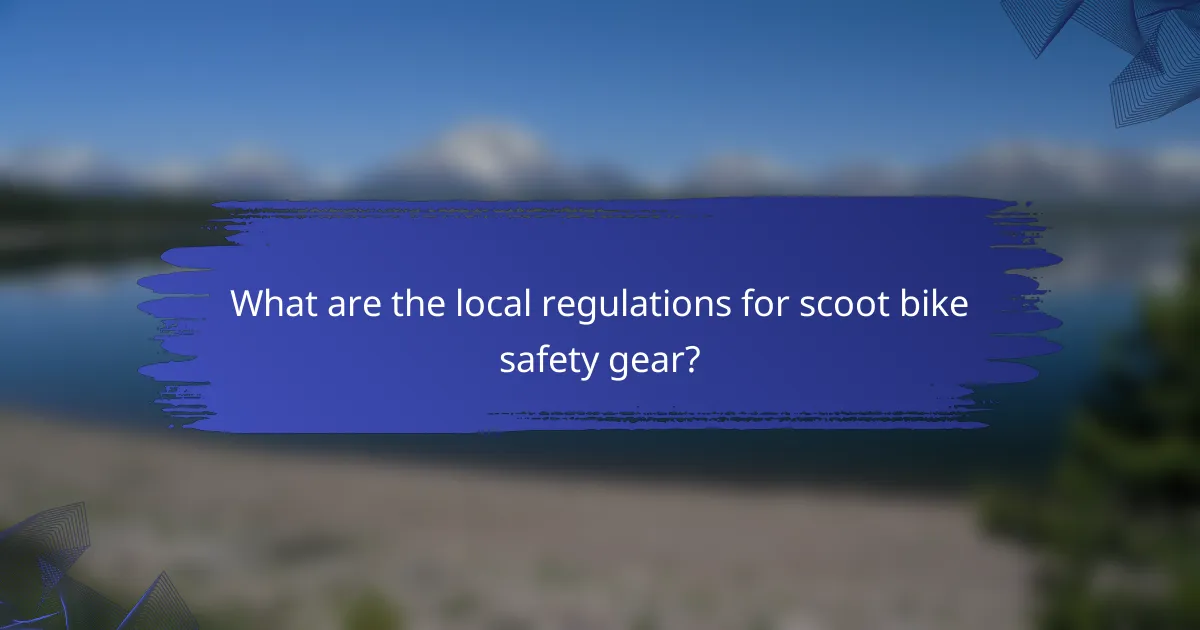
What are the local regulations for scoot bike safety gear?
Local regulations for scoot bike safety gear vary by region but generally mandate the use of helmets and may require additional protective equipment. Compliance with these regulations is crucial for rider safety and legal adherence.
Helmet Requirements
Most regions require riders to wear helmets while using scoot bikes. These helmets should meet safety standards such as those set by the Consumer Product Safety Commission (CPSC) in the United States or the European Committee for Standardization (EN 1078) in Europe. Always check local laws to ensure compliance.
In some areas, specific age groups may have different regulations. For instance, children under a certain age might be required to wear helmets at all times, while adults may have more lenient rules. It’s essential to stay informed about these distinctions.
Additional Protective Gear
In addition to helmets, local regulations may recommend or require other protective gear such as knee pads, elbow pads, and wrist guards. This gear can significantly reduce the risk of injury in case of falls or accidents.
While not always mandated, wearing additional protective gear is a smart choice for enhancing safety. Riders should consider their skill level and the riding environment when deciding what gear to wear.
Enforcement and Penalties
Enforcement of safety gear regulations can vary widely. Some areas may have strict penalties for non-compliance, including fines or restrictions on riding. Others may focus more on education and awareness.
Riders should be aware of the potential consequences of not following local regulations. It’s advisable to familiarize oneself with local laws to avoid penalties and ensure a safe riding experience.




